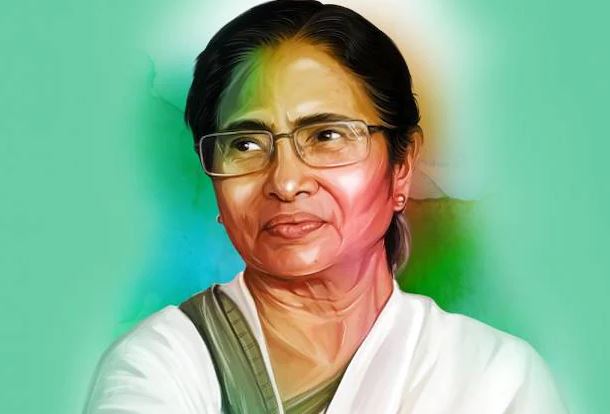Kolkata: Defying all exit-poll predictions, the Trinamool Congress (TMC) has surged ahead in 29 of West Bengal’s 42 Lok Sabha seats, dealing a blow to the Bharatiya Janata Party’s (BJP) target of securing 35 seats as they just managed to reach double digits.
The BJP was leading in 12 seats according to the EC website.
Three years after putting a halt to the BJP’s advances in Bengal, the TMC, led by Mamata Banerjee, again proved its mettle by thwarting the BJP’s formidable campaign, spearheaded by PM Narendra Modi himself.
Despite facing a barrage of challenges including corruption allegations and internal conflicts, the TMC stood strong, even after opting to go solo post its withdrawal from the INDIA bloc in the state.
Political observers note that the BJP in West Bengal had set an ambitious goal of securing 35 Lok Sabha seats, banking on the implementation of the CAA as a potential game-changer and leveraging Hindu polarisation, which fell flat on their face.
Despite their fervent efforts, they failed to gain substantial ground, primarily due to internal divisions, organisational frailties, and the formidable impact of the Left-Congress alliance, analysts said.
“Internal divisions, organisational weaknesses, and the impact of the Left-Congress alliance all contributed to the BJP’s difficulties in garnering anti-TMC votes,” political analyst Maidul Islam said.
The BJP’s tally is likely to decline by six seats, with its vote share dropping by three percentage points to 37.
In contrast, the TMC’s vote share increased to 47 per cent, up from 43 per cent in 2019.
In the last Lok Sabha polls, the TMC had won 22 seats, the BJP 18, and the Congress two.
The Communist Party of India (Marxist) led Left Front failed to win any seats in 2019 and appears to be repeating that performance, not leading in any of the 42 constituencies. The Congress is leading in one seat.
The breakdown of seat-sharing talks between the TMC and the Congress in January appeared to benefit Mamata Banerjee’s party, setting the stage for a three-cornered electoral contest and providing a strategic advantage to the TMC.
According to TMC sources, this breakdown allowed the party to consolidate nearly 30 per cent of the minority and anti-BJP votes in the absence of another credible “secular and stronger force.”
“The breakdown of the alliance worked well for us,” said TMC leader Santanu Sen, adding, “The Left and the Congress were decimated. But as we emerged as the strongest alternative to the BJP in the state, we won even in seats which were considered BJP strongholds.”
The consolidation of anti-TMC votes had previously led to a significant rise in the BJP’s vote share from 17 per cent in 2014 to 40 per cent in 2019, increasing its seat count from two to 18.
Left-Congress alliance also led to TMC’s defeat in three seats in North Bengal where the vote share of the alliance was more than the victory margin of the BJP.
However, political analysts suggest that local issues, such as corruption allegations, the cancellation of SSC jobs, and the implementation of the CAA, reshaped the election dynamics this time around.
The implementation of the CAA, along with Banerjee’s comments against certain sections of the Ramakrishna Mission and Bharat Sevashram Sangha, and the OBC reservation issue where the Calcutta High Court recently struck down the OBC status of several classes including 77 Muslim communities, helped solidify the TMC’s minority support base.
Although these issues intensified communal polarisation, they also helped the TMC reach out to liberal and elite Bengalis who had been drifting towards the Left and Congress.
Welfare schemes such as Lakshmir Bhandar and Kanyashree, aimed at women, also helped solidify the TMC’s base among women voters, who comprise 50 per cent of the electorate.
Despite corruption charges, the SSC scam, and the Sandeshkhali issue where TMC leaders were accused of sexual abuse and land grab, the TMC’s performance remained strong.
The BJP, hoping to make a strong statement in the Basirhat constituency which includes Sandeshkhali, saw its candidate Rekha Patra defeated by TMC veteran Haji Nurul Islam by nearly two lakh votes.
For the BJP, many factors did not work in their favour, despite Prime Minister Narendra Modi leading the charge with around 19 rallies.
Political analysts noted that the CAA did not resonate with voters as expected, instead prompting minorities, who were previously undecided between the TMC and the Left-Congress alliance, to consolidate behind the TMC.
“We emphasized the ideological significance of the CAA, likening it to the Ram Mandir issue at the national level and asserting that the CAA would help the party sweep elections in the state,” said a BJP leader who requested anonymity.
“However, our poor organisational strength and failure to counter the TMC’s campaign against the CAA on the ground were significant drawbacks.”
Internal challenges also plagued the BJP, including dissatisfaction among cadres over ticket distribution, leading to possible losses in Junglemahal and North Bengal, where the party is set to lose four seats. Both regions had rewarded the BJP in the last Lok Sabha polls.
Political analyst Biswanath Chakraborty said the lack of a “Modi wave” and the BJP’s organisational weaknesses were critical factors in its poor performance.
The TMC’s victory in the West Bengal Lok Sabha elections showcases its adept strategic maneuvering and capacity to unify support amidst obstacles, while the BJP’s losses emphasise the imperative for bolstered organisational prowess and a compelling campaign approach to rekindle momentum in the region.
PTI
